Polish artist Ewa Cieniak isn’t really sure why embroidery calls out to her.
She doesn’t use fancy stitches or employ complex techniques in her multidisciplinary projects, and she’s never had any formal textile art training. But she does know that thread and fabric are both her inspiration and her medium of choice.
Ewa thinks big. The landscape often becomes her studio. Nature, abandoned buildings, and the figures and recycled objects she places within them all play a part.
She explores the global themes of climate change and sustainability, as well as making personal explorations of her experience and identity. Ewa uses thread and fabric to advocate for the planet and its dwindling resources. She often uses video to capture her process and as a way of presenting alternative viewpoints.
Creative participation is central to Ewa’s work. Individuals pose as subjects, take centre stage in an installation, or even contribute to the making.
Strangers, neighbours and family members are all invited to play their part. Consequently, her work has a strong sense of place, as well as of the individuals living within it.
The search for meaning
Ewa Cieniak: I create projects that say something about me as a human being, woman, mother and artist. I show what is important to me. People are my inspiration. Particularly their faces showing emotions, as well as their stories and experiences.
I am also interested in relationships between individuals, and the relationship between people and nature, especially birds and trees. Freedom, equality and ecology are key values for me.
‘My feelings – fear, anger, joy – or my needs are often my starting point. I transform them into art. I hope that people find value and healing in it.’
Ewa Cieniak, Textile artist
The inspiration for Wake Up Humans – is the fear of humanity’s extinction due to a lack of water. In Synchronicity, it is the discomfort of talking about menstruation, together with anxiety about ageing and the menopause. By exploring this often taboo topic and, importantly, including myself in it, I release myself from shame.
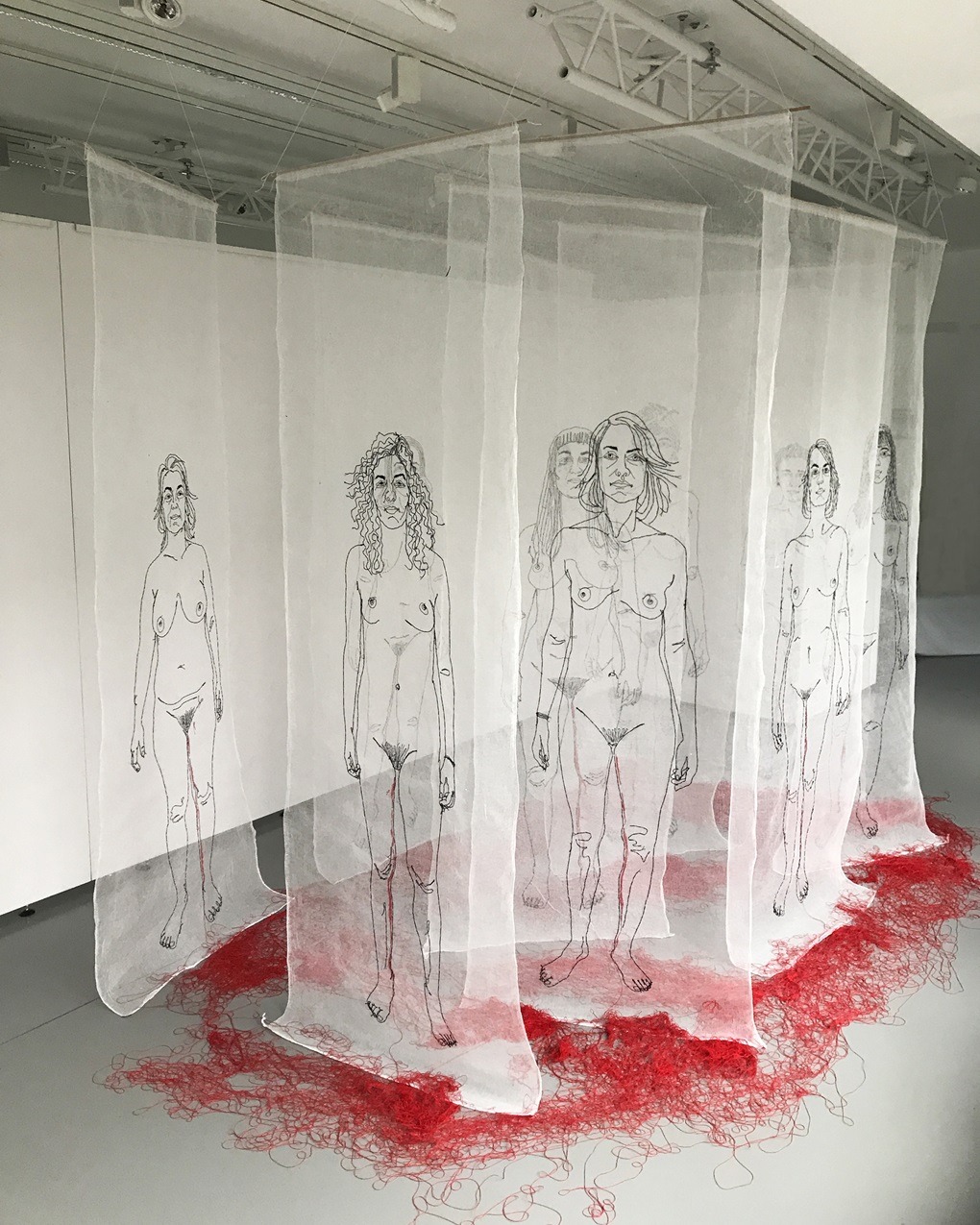
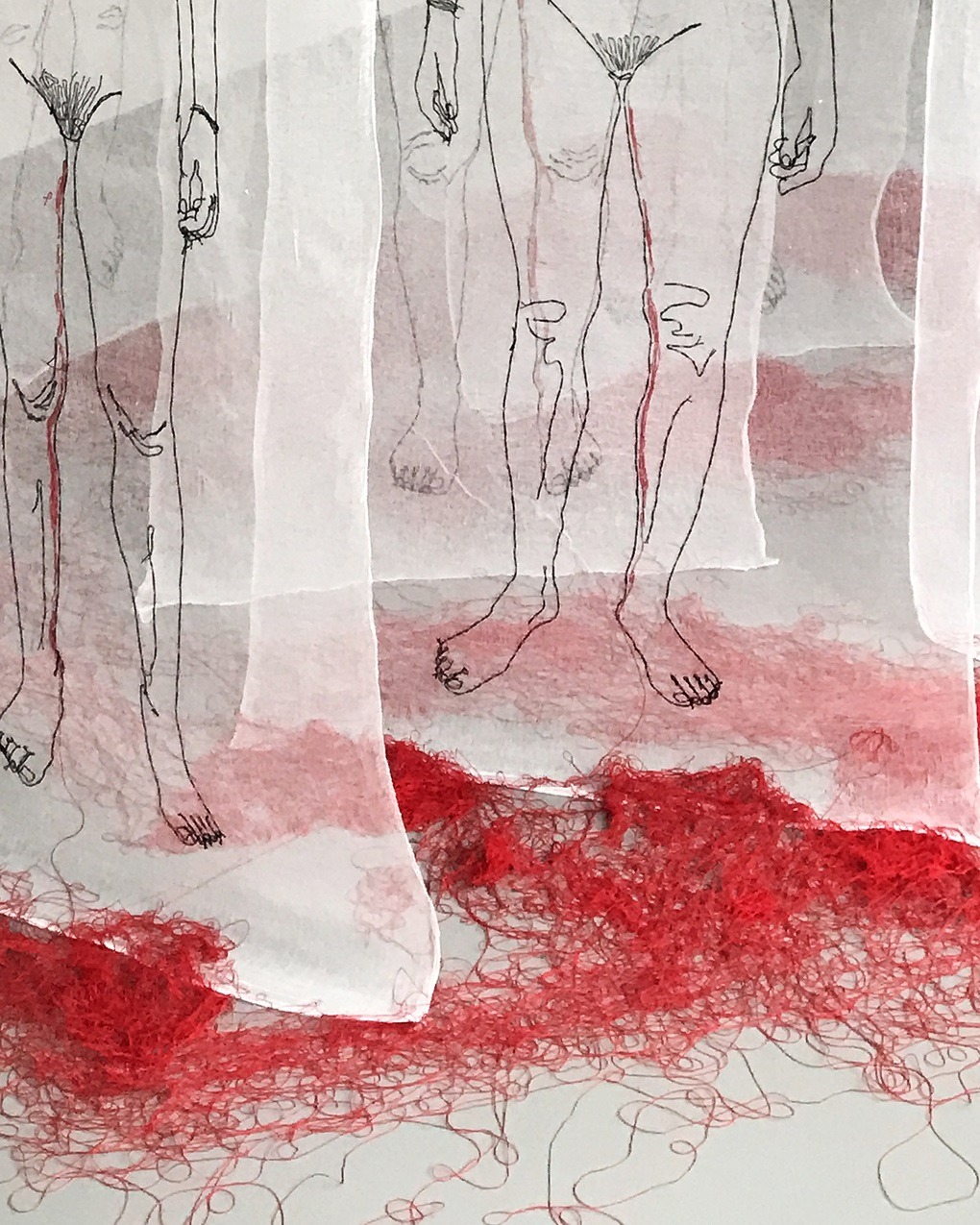
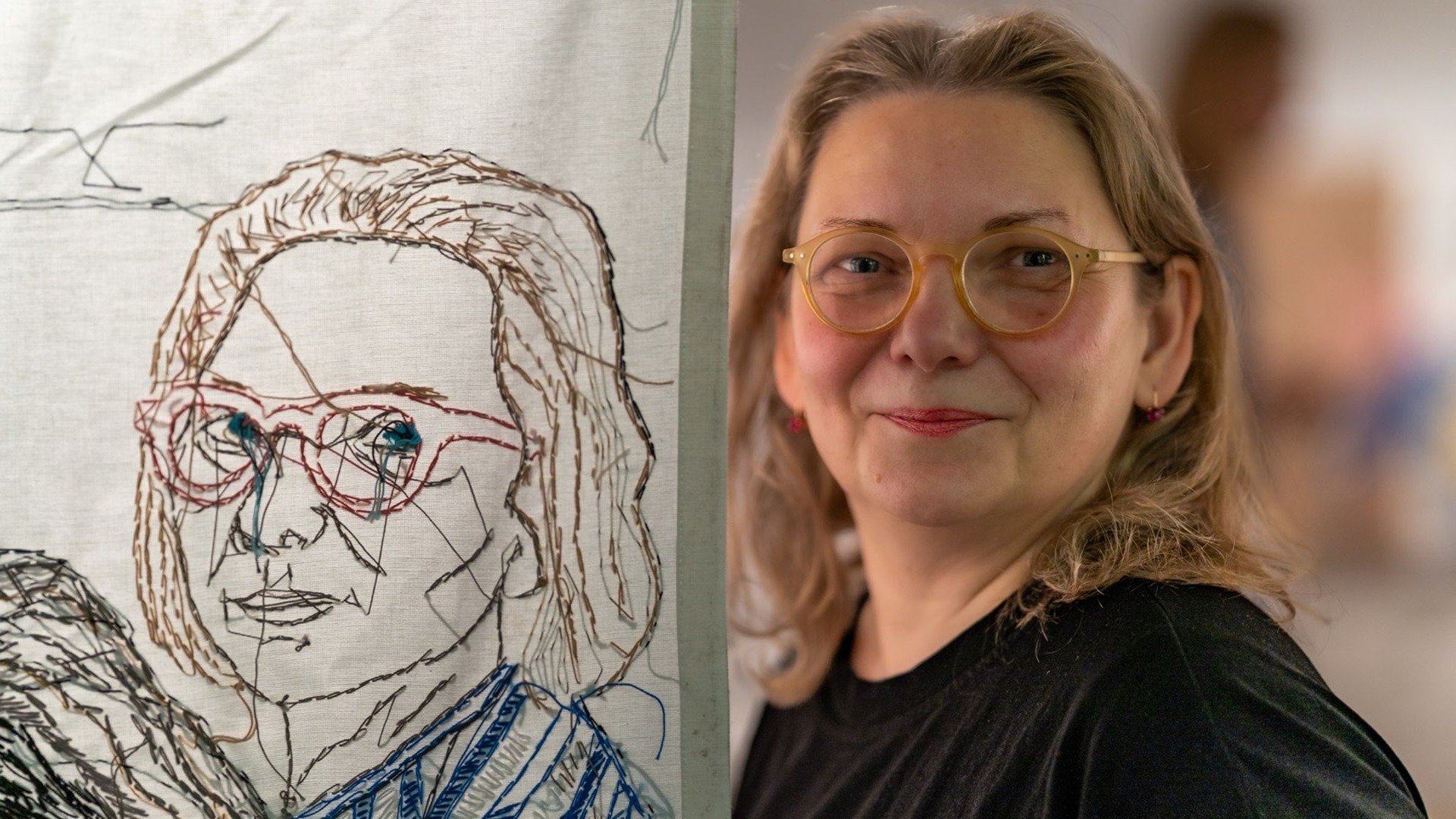
Evaluating ideas
If a concept or idea makes me think about it all the time, and if it pushes me hard enough to give real shape to the idea, then it is worth doing. This is how I probe an idea’s value.
For me, the time between having an idea and its implementation is usually quite short. If the idea is compelling – and I can identify this by the amount of energy I feel – I develop it. Generally, I finish a project within a few weeks or two to three months.
Of course, there are exceptions. For example, Panorama of a Small Town took me ten months. I also do smaller scale projects on which I might spend only a few days.
I think about my ideas a lot. I imagine them in my head many times before actually creating them in real life. Up to now, I have always made them at their final size from the beginning, rather than creating sample models.
I usually take a photo and then use a projector to transfer the outline to a sheet or other fabric to work on. I find thread a great tool to visualise my ideas.
Across generations
I have great memories of working with my mother, Maria, on the creative experiments and installations Lady Macbeth and White Lady. These are both part of the series, Haunted Houses.
Lady Macbeth is my interpretation of the Shakespeare play of the same name. The walls of the house are flowing with blood, represented by red thread. Red thread covers the protagonist’s face and hands.
It was exciting as the installations were created in a rural area, close to the town where I was born, around Halloween. Both buildings were in ruins and scheduled for demolition.
People passing by stopped and wondered what was going on. Although the topics were quite scary, my mum and I had a lot of fun together.
Another time, I invited my mother to participate in the Altar Wardrobe project. The inspiration for this was a vision of how people surround themselves with things, particularly clothes. We worship them, yet they take up space and energy. Maria, identified with this too and she stars in the installation.
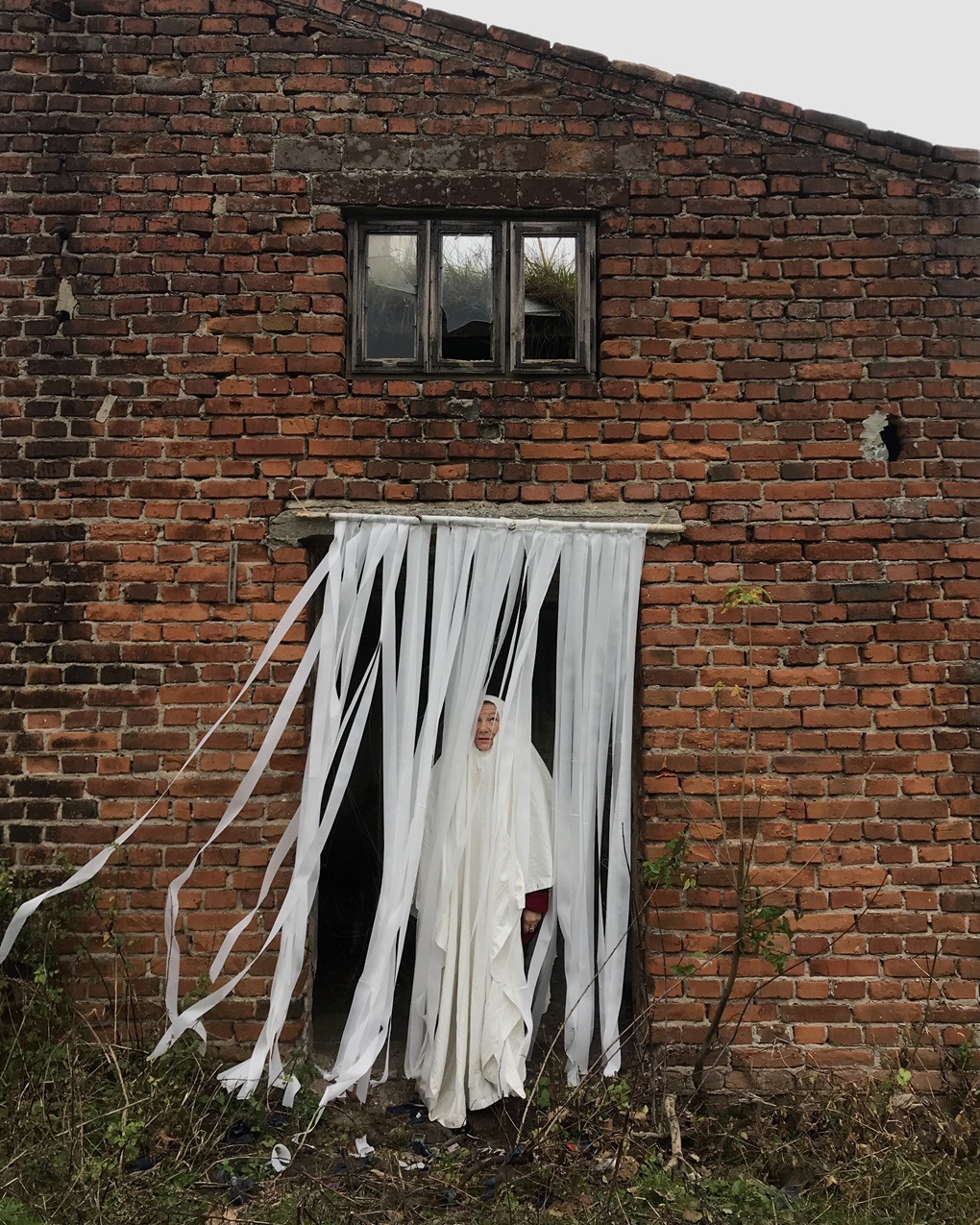
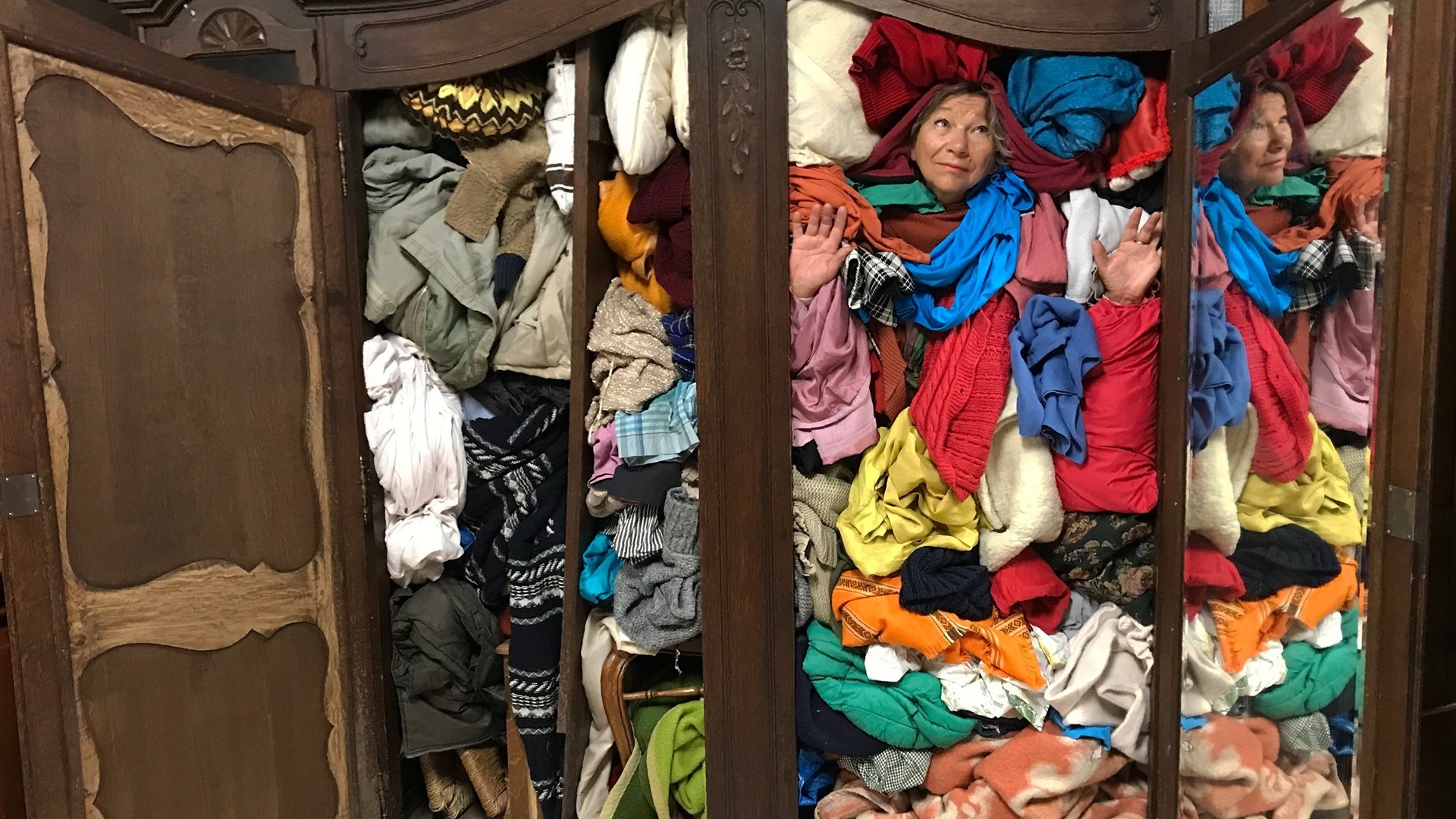
Becoming an artist
After working as an art director and creative director for agencies such as Saatchi & Saatchi, I left advertising in 2014. I spent a number of years searching for what I wanted to do. I wasn’t sure whether I wanted to work alone or with others.
I was also in therapy for five years, and it was in that last year of therapy that I created the 7-Legged Table project.
‘The 7-Legged Table is a metaphor for my family.’
Ewa Cieniak, Textile artist
Just as we are all different, each leg is a different colour and shape, with distinct features and even its own particular woodworm.
While working on the table, I felt drawn to visit all the places I had lived. Over a three-month period, accompanied by either my daughter or my mother, I visited five cities and villages and nine houses – taking the table with me.
I made a short documentary about creating the table and my travels with it, including contributions from my whole family, talking about each other using the metaphor of ‘a leg’. It was a journey into the future through the past.
This project was pivotal for me. It was only after completing it that I felt able to call myself an artist. Despite graduating from the European Academy of Arts I had always been plagued by doubt and a lack of self-confidence.
Until then, the need to earn a living and have a ‘proper’ profession had kept me from my original love and calling – making art.
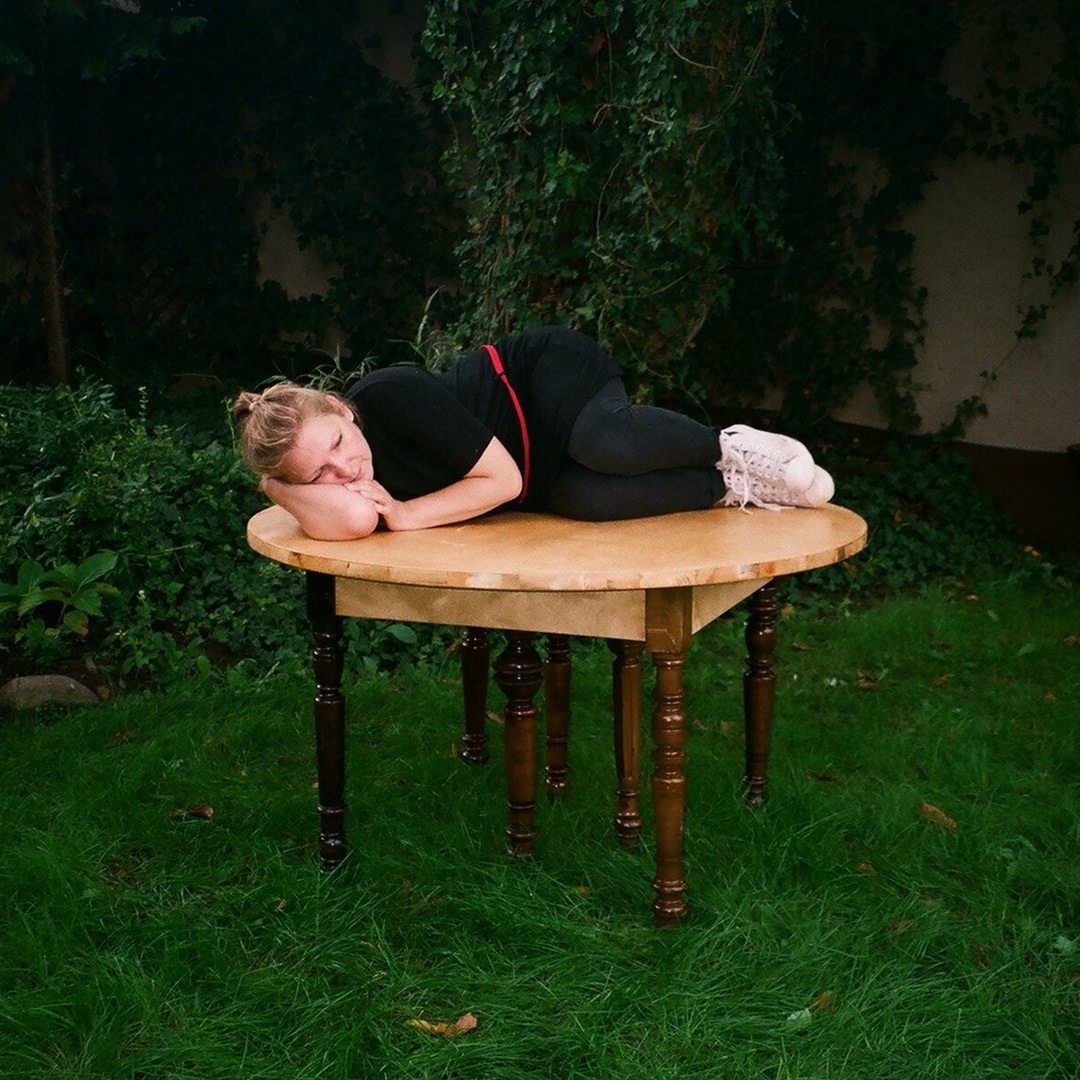
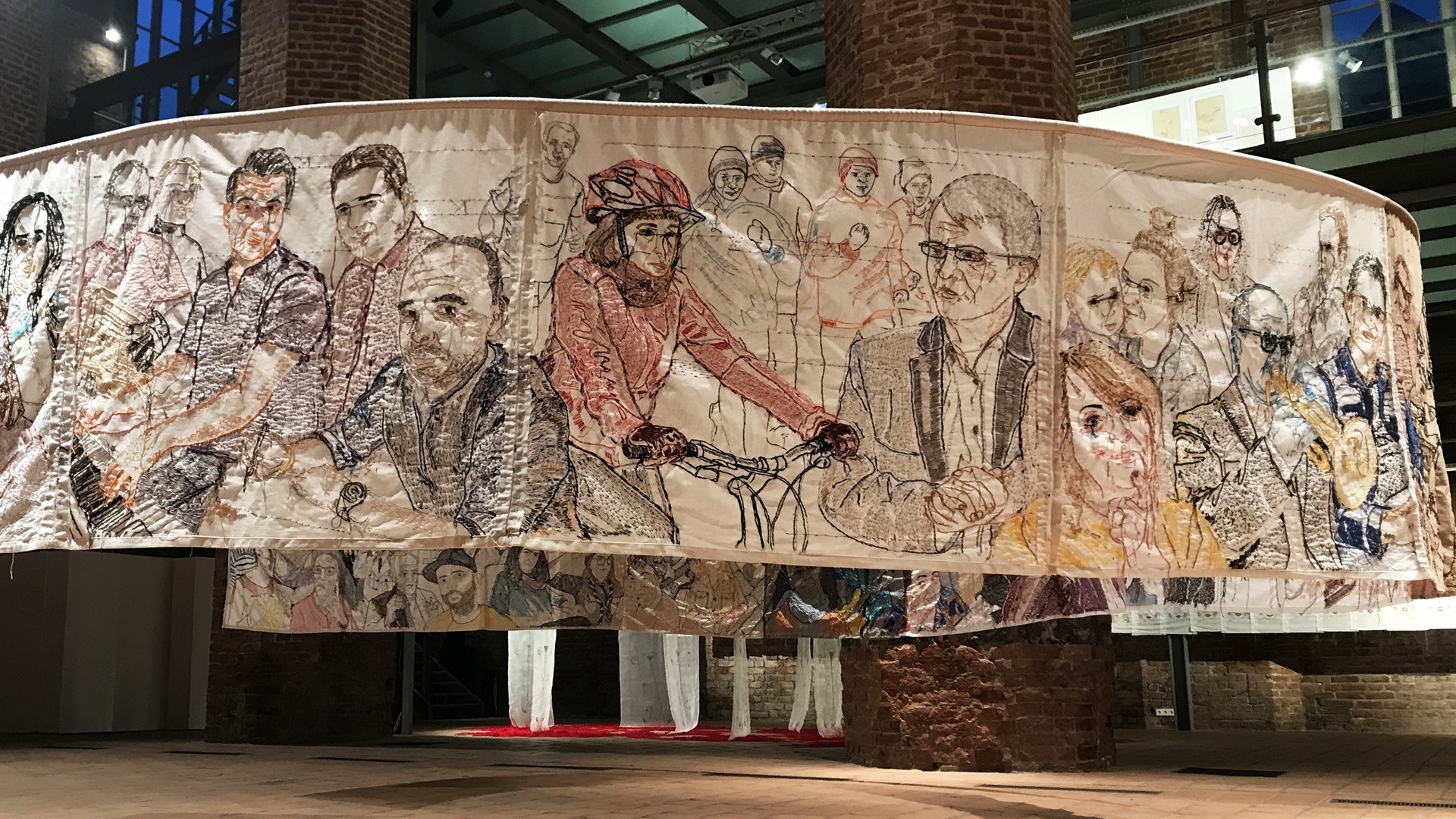
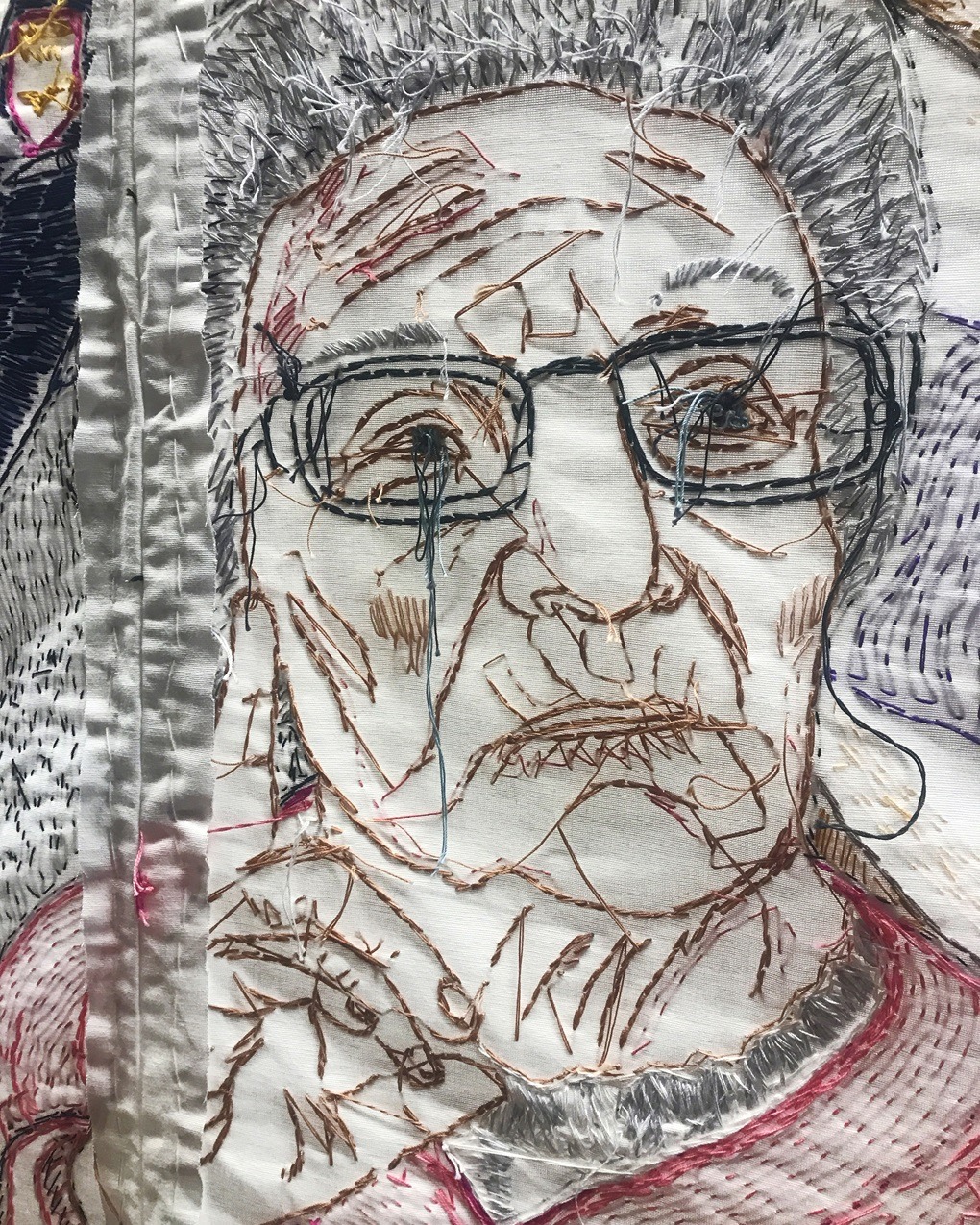
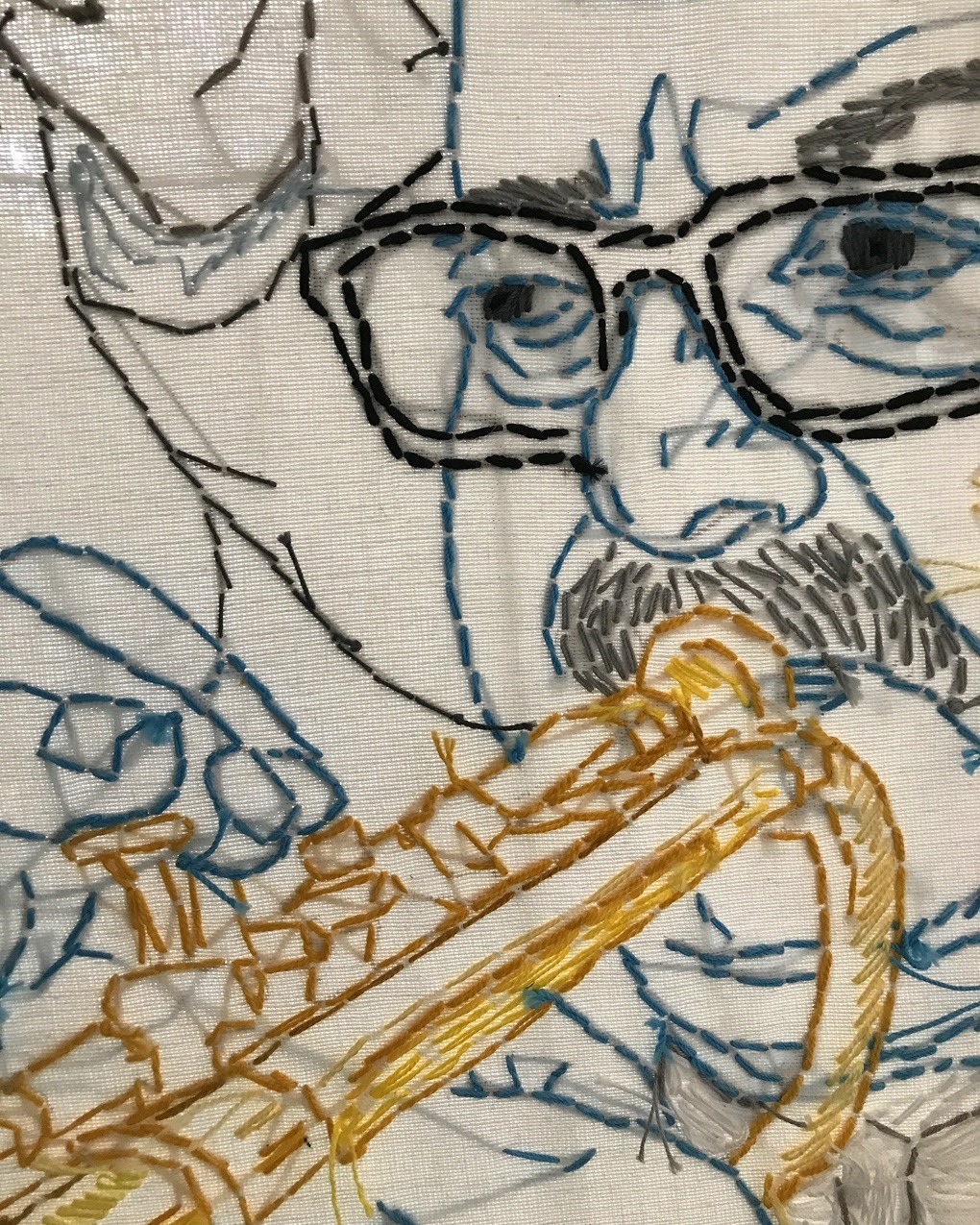
Portrait of a town
One of my biggest challenges was creating Panorama of a Small Town, an embroidered portrait of the inhabitants of my hometown, Koluszki in Poland.
I created it in 2021 as part of a scholarship from the Minister of Culture and National Heritage. The inspiration was the beauty of the Bayeux Tapestry, and I also wanted to challenge myself by creating a large project.
It took me almost a year to meet, record and photograph over one hundred people, and then embroider them on a sheet of fabric, 21 metres (69 feet) long and one metre (39 inches) wide. On reflection, I can’t help admiring my audacity in thinking I could do it.
‘I believe that any challenge can be overcome if you are determined and focus hard enough – of course, some self-confidence always helps.’
Ewa Cieniak, Textile artist
The hand of fate
An unexpected outcome of the project was that I strained my wrist due to overwork. It was very painful and I had to undergo extensive rehab to regain its use.
As a result, I started experimenting with installations and sculptures using recycled fabrics, threads and clothes as a way of avoiding stitching and straining my hands.
‘Fate forced me to develop my practice with more experimental forms, installations and on site activities.’
Ewa Cieniak, Textile artist
I really want to undertake large projects. I am drawn to large, spatial and sculptural forms. However, the challenge is to take those ideas into formats that will fit in my apartment, or more precisely, my room-cum-studio. For now, I don’t have a studio outside my home.
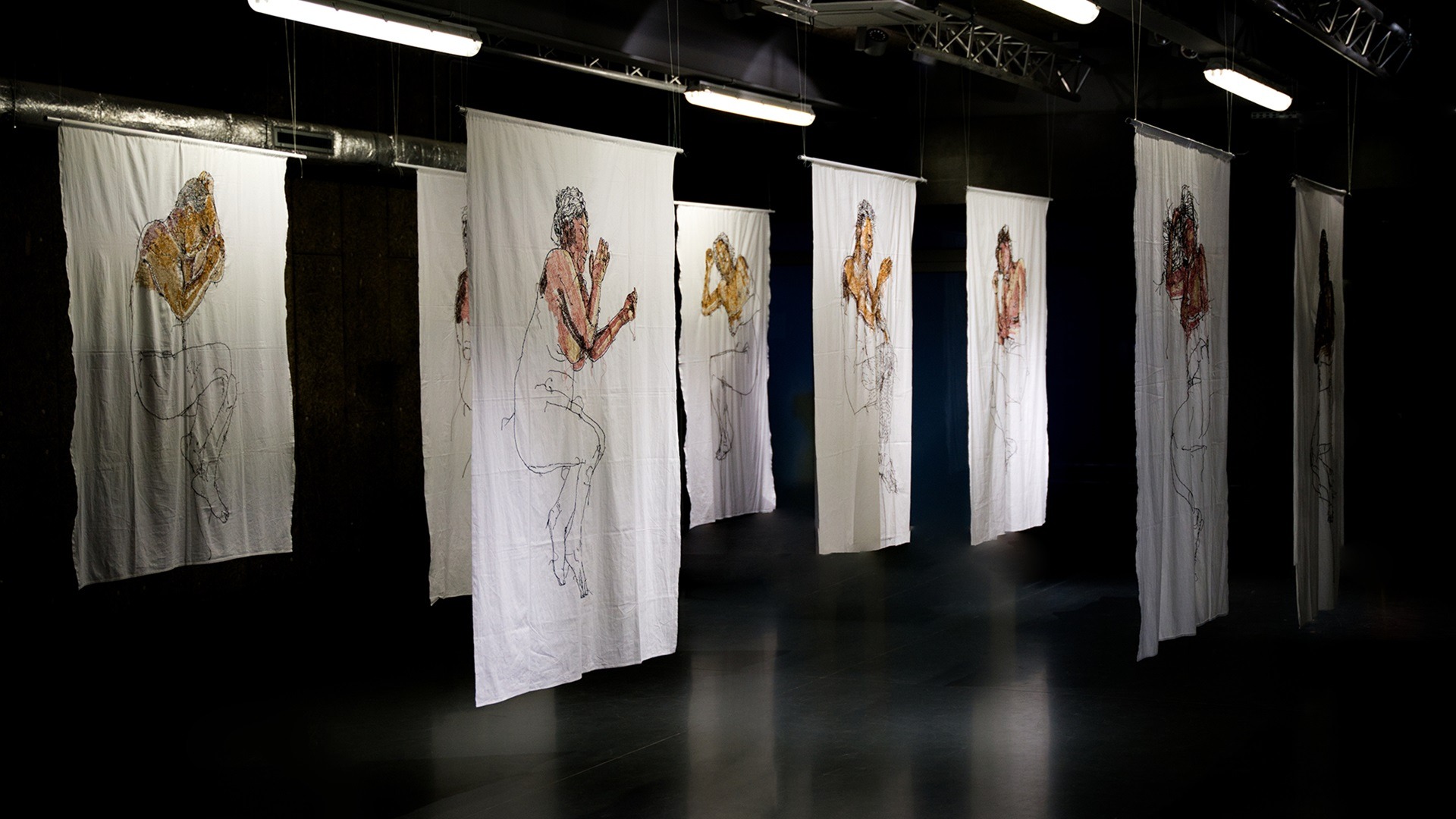
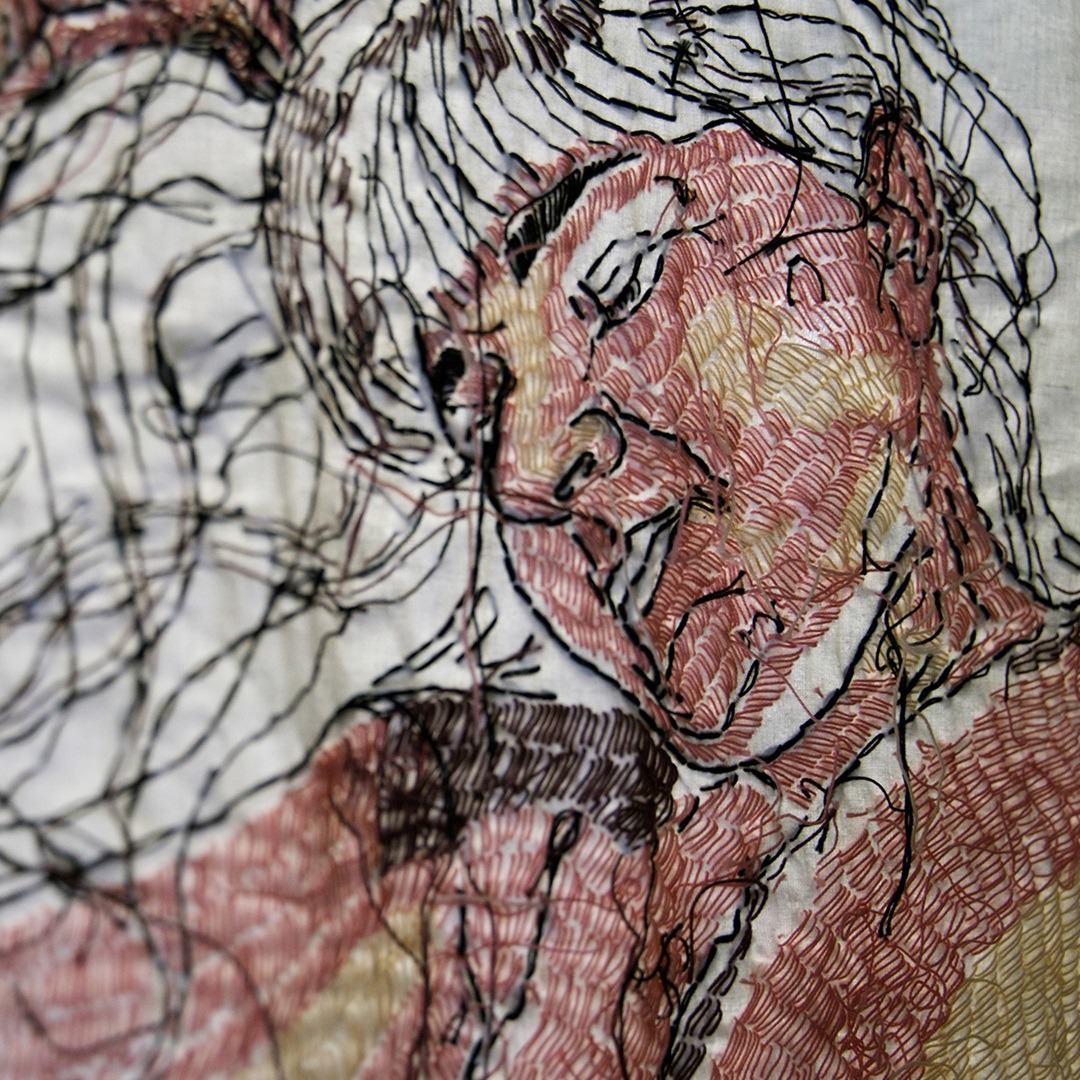
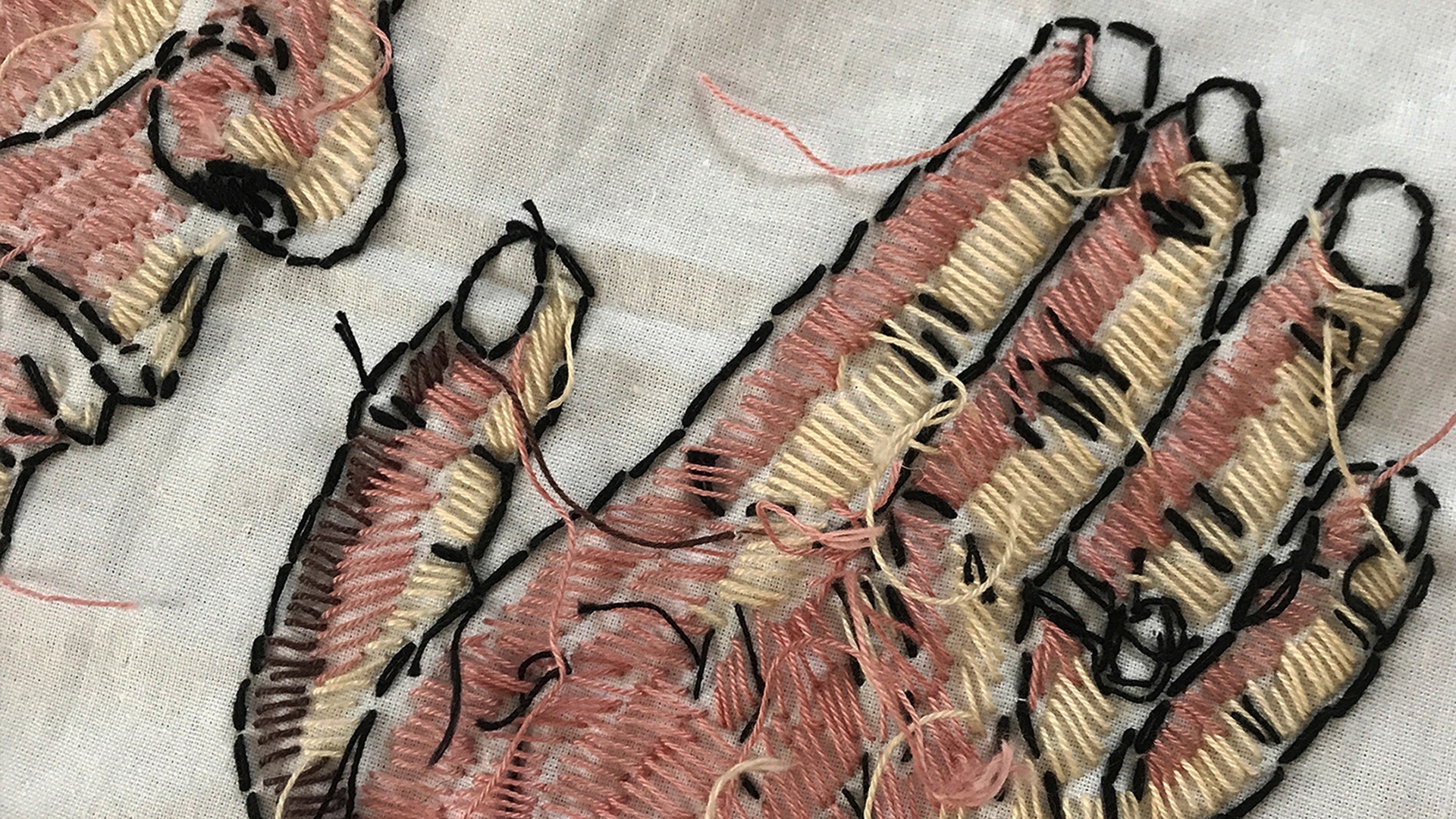
Worldwide wake up call
One of my latest works is an installation, Wake Up Humans. Through this interdisciplinary art project, I want to highlight the threat of extinction of mankind due to the decreasing amount of water on Earth.
‘We are asleep. We are not doing everything we can to reverse, or at least slow down, the degradation of the Earth and the destruction of its resources.’
Ewa Cieniak, Textile artist
The human body consists mainly of water – between 60-70 per cent. If water disappears, so do we. The art installation consists of eight sleeping human figures embroidered on old sheets in embryonic poses.
I also created a film consisting of fragments of recordings of various forms of water: streams, lakes and ponds. Upcycling old sheets as canvases is my way of being a responsible artist and consciously conserving resources.
I deliberately embroidered approximately 30-40 per cent of the ‘sleeping bodies’ in detail while only roughly drafting the lower half of each body. I used this visual shift in style to really emphasise my fear of humanity’s extinction.
The spark that changed everything
My grandmother Nastka embroidered. In the 1980s, almost every woman in Poland knitted, crocheted, sewed and embroidered, but out of necessity rather than as a hobby. It was how women coped with the scarcity of everything.
My grandmother made me many dresses, sweaters and blouses but I didn’t appreciate them as a child. After she died in 1999, I was left with just one small dress embroidered with the initials ‘EC’ and two cushions embroidered with birds: a peacock on one and two doves on the other.
In 2019, in a moment of creative crisis, I looked at them more carefully and realised embroidery was my calling. That was my eureka moment.
After a 20-year break, I picked up my artistic journey again. I confess I was surprised that embroidery called out to me. I don’t particularly have embroidery skills and I’ve never taken any courses, but I find thread and fabrics are the most inspiring and versatile medium for my experiments.
I embroider threads on the canvas as if I am drawing with a crayon or felt-tip pen, or painting with a brush.
‘I don’t want to – or feel the need – to use any complicated stitches or techniques.’
Ewa Cieniak, Textile artist
My first projects were very simple and mostly embroidered portraits. Since then, I have been constantly learning and developing my style and way of thinking and making.
Recently, I have been creating more and more installations and sculptures. I use threads, fabrics and other materials, mostly recycled, to express my ideas.
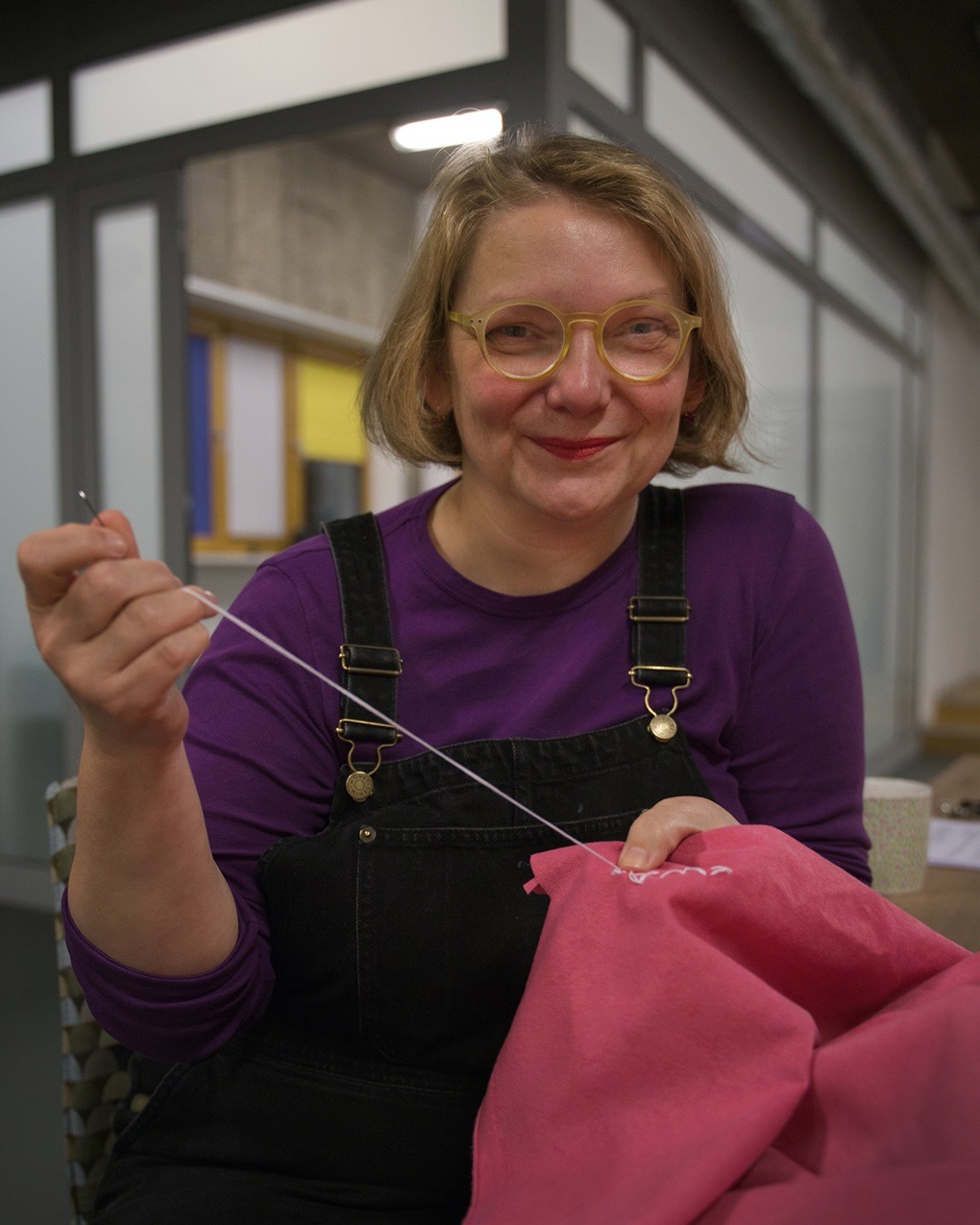
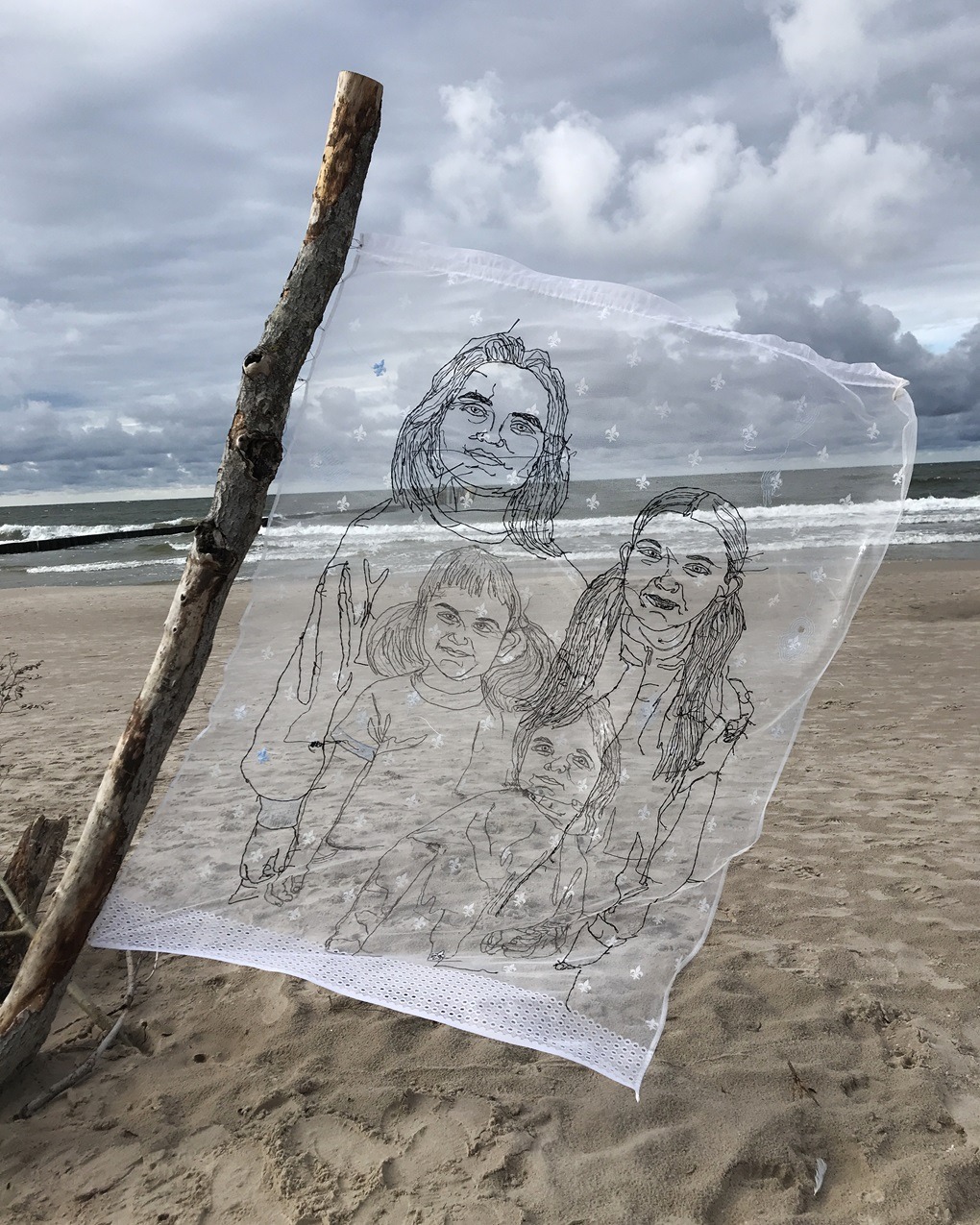
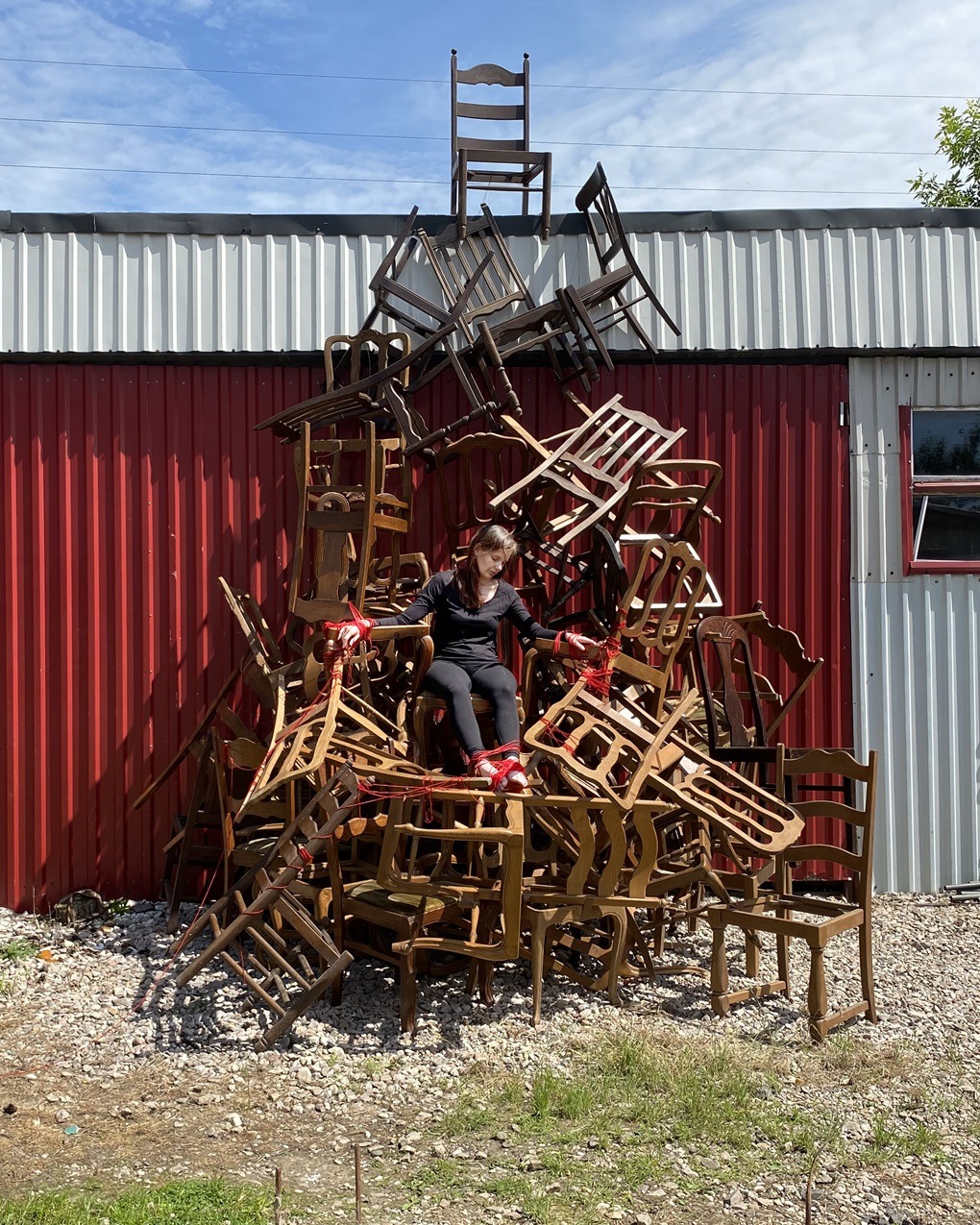
Altogether now
My work often involves other people. I’m always very encouraged when people respond to my invitation to take part. I like participatory creativity and I want to be involved in more community projects in future.
One example of this is O_Kregi (O_Circles). I invited women of all ages, from different towns and cities, to embroider self-portraits. Each participant sent me a photo of herself from which I prepared a line drawing of their portrait, on gauze.
During a three-hour workshop, each woman embroidered her portrait in whatever style she wished. Most worked freestyle. They didn’t need to know any stitches or techniques. The portraits were grouped together to create an installation.
Red Thread, shown at Wałbrzych BWA Art Gallery, Poland, in 2024, was another multidisciplinary project, this time about mental health. Made up of seven huge, embroidered portraits of women suffering from depression, it included words or phrases that describe their struggle with the illness.
The project involved a series of seven video-recorded performative conversations between myself and each woman. During the conversations, each woman unwinds the yarn placed on her hands and, as I listen to her story, I wind this yarn into a ball.
The portraits were accompanied by an installation using several hundred balls of red yarn – a metaphor for the scale of the problem.
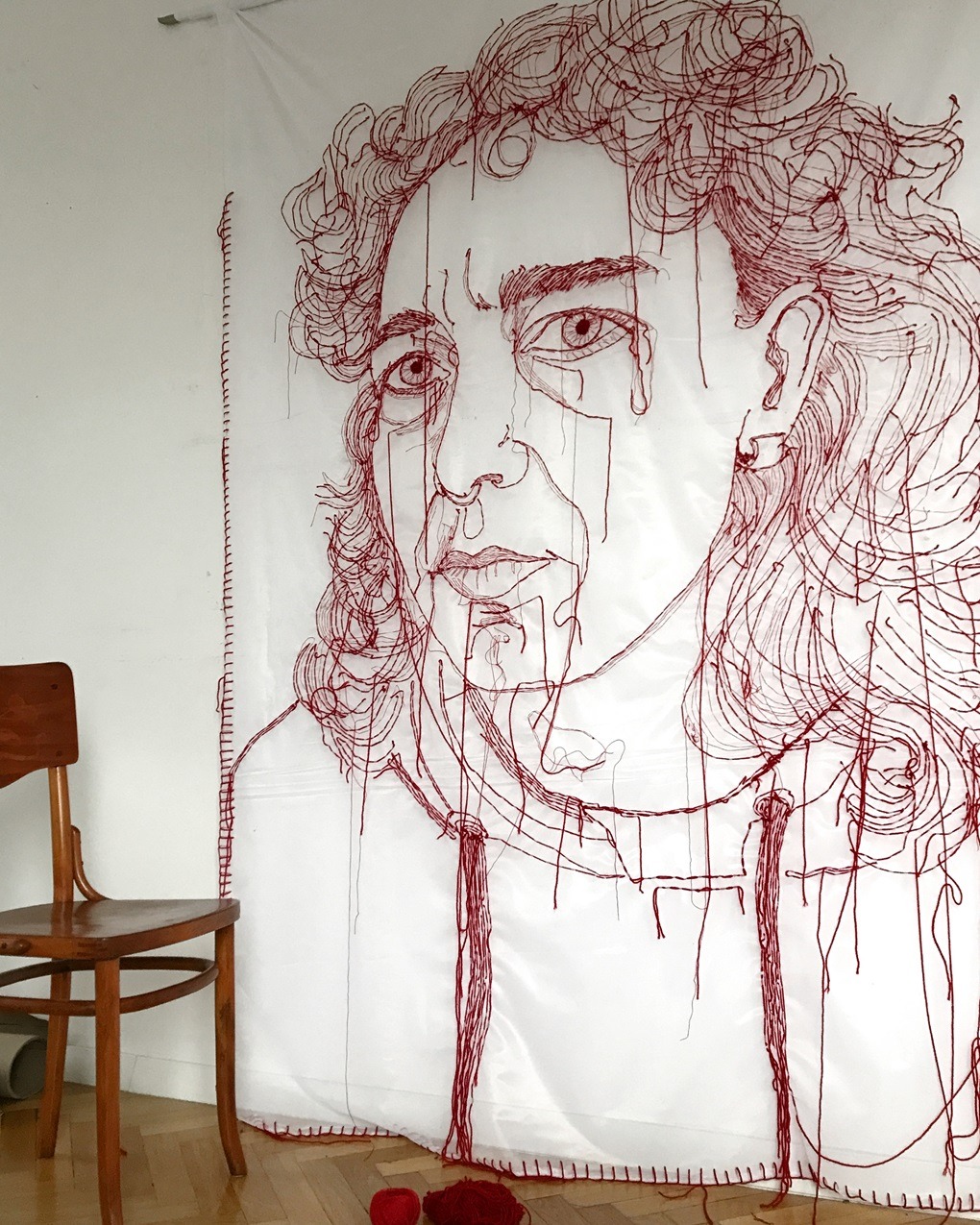
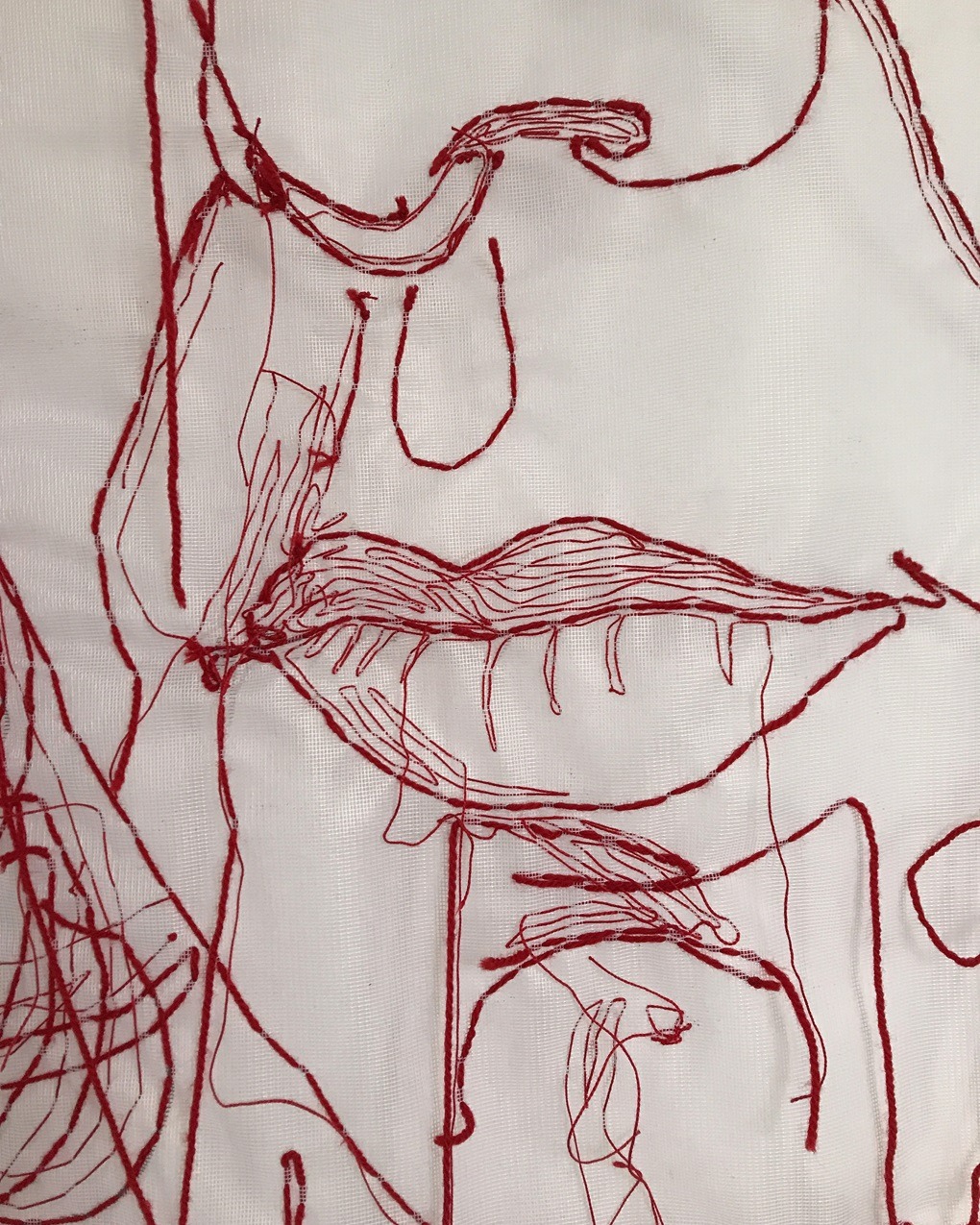
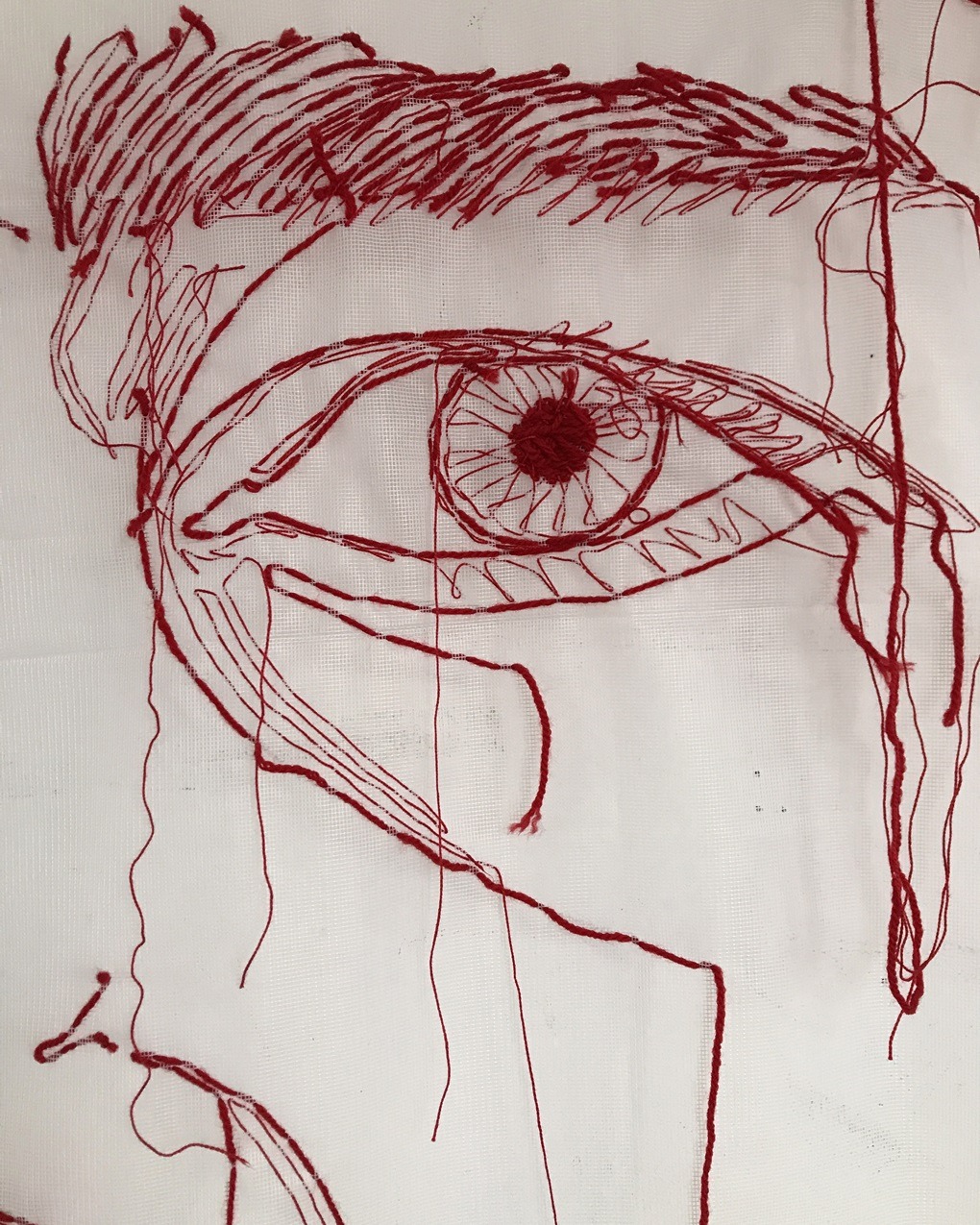
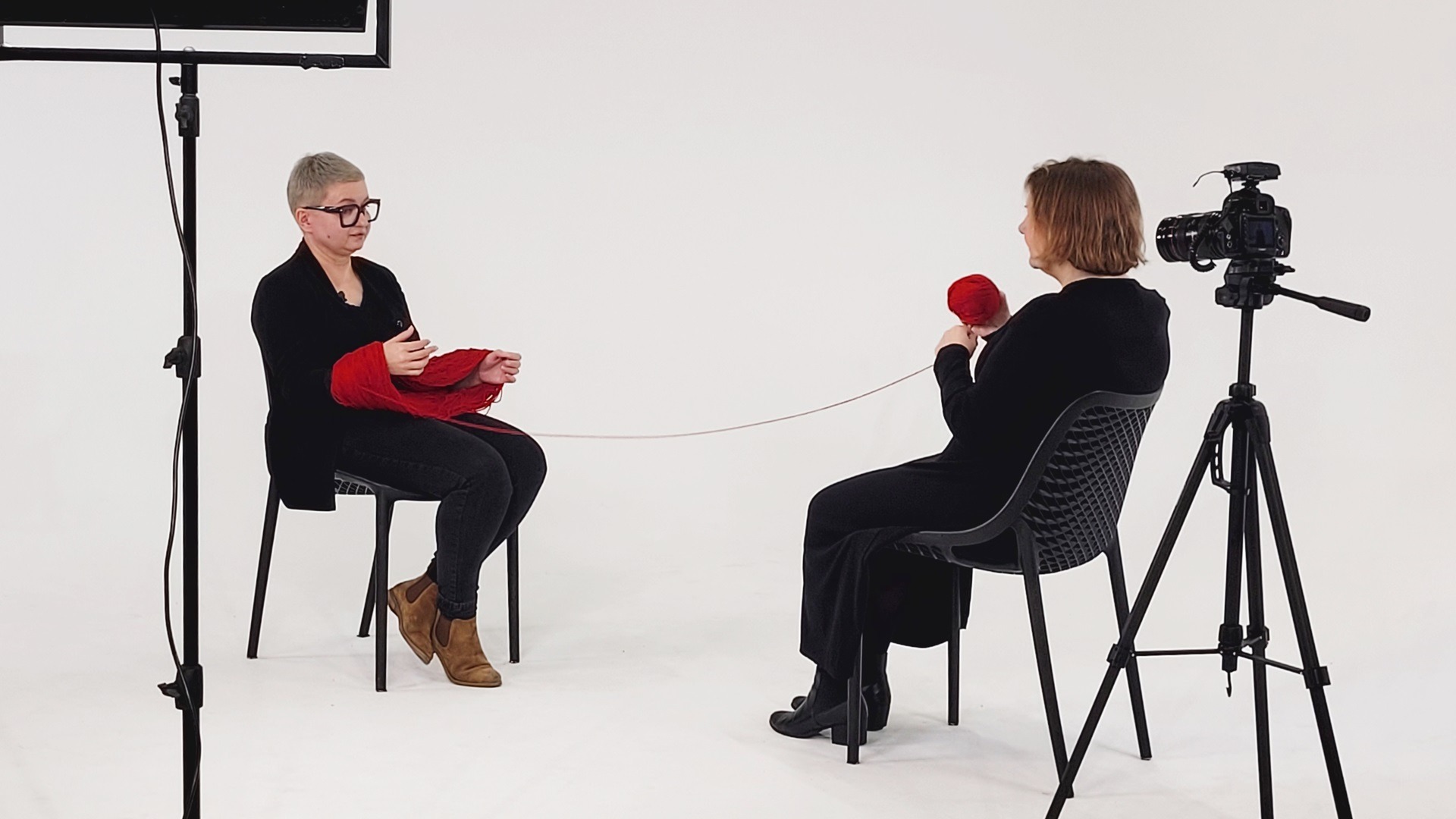
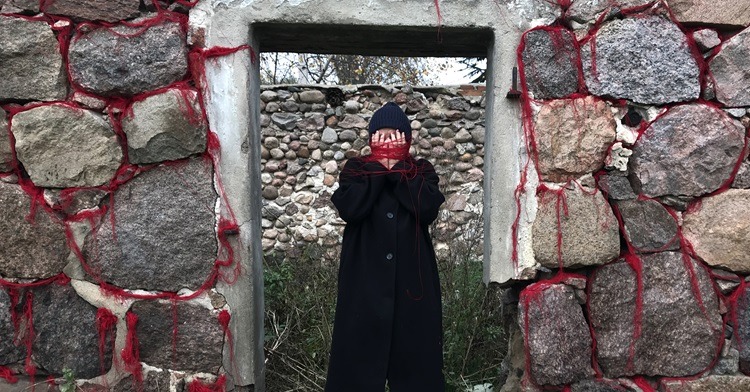

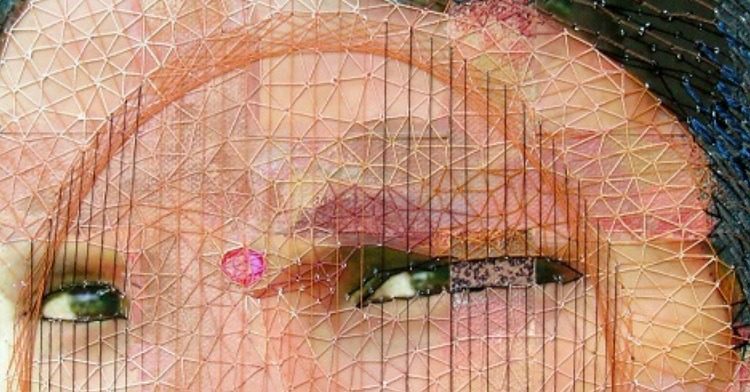
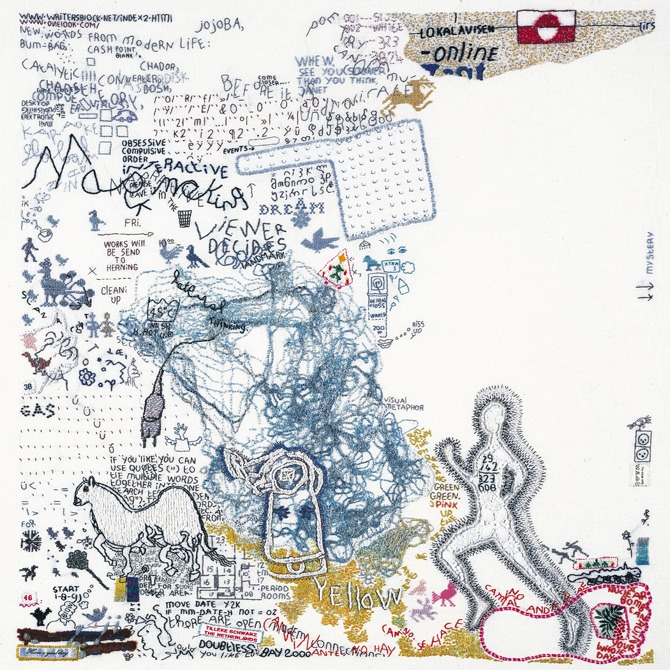
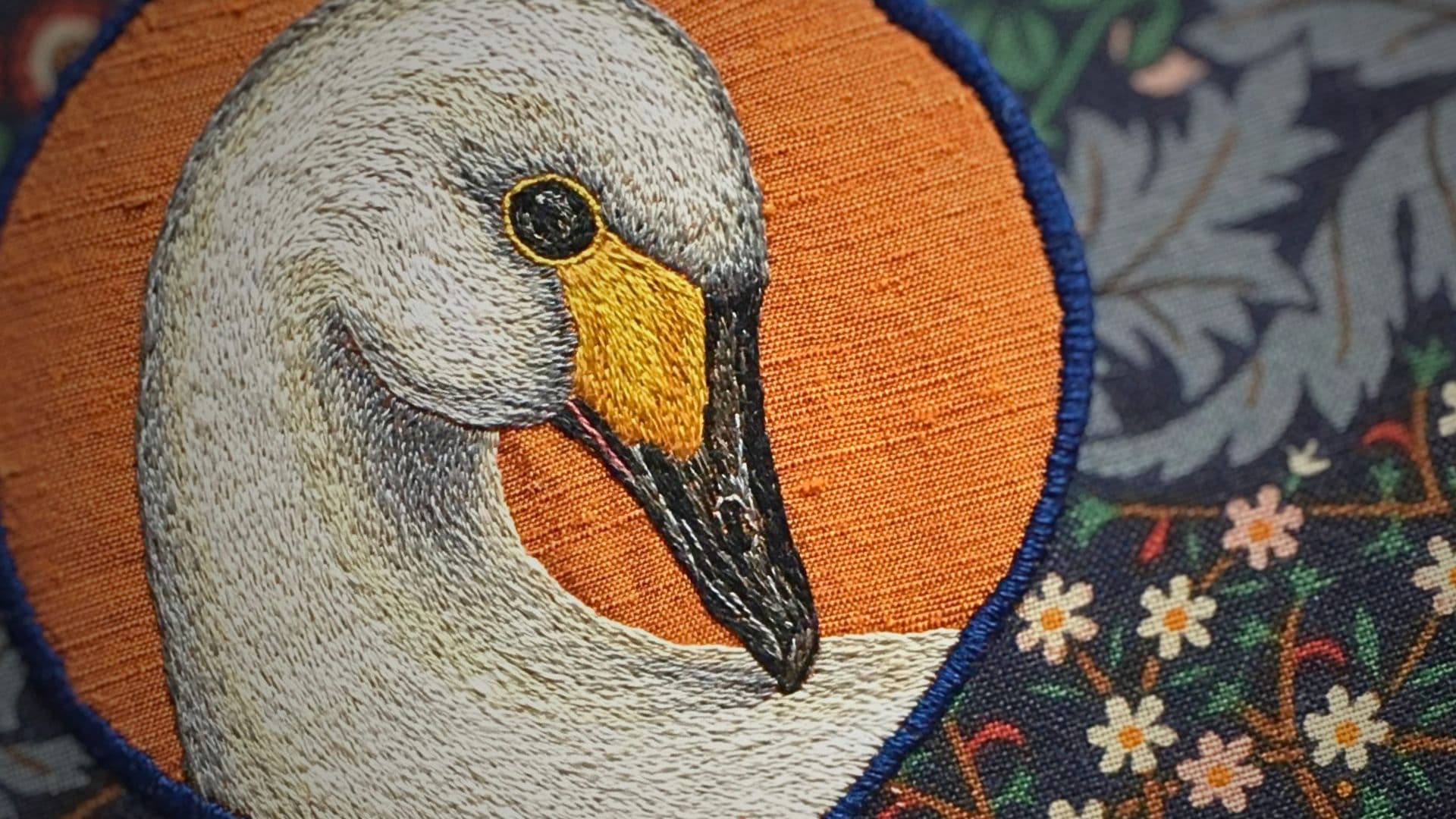
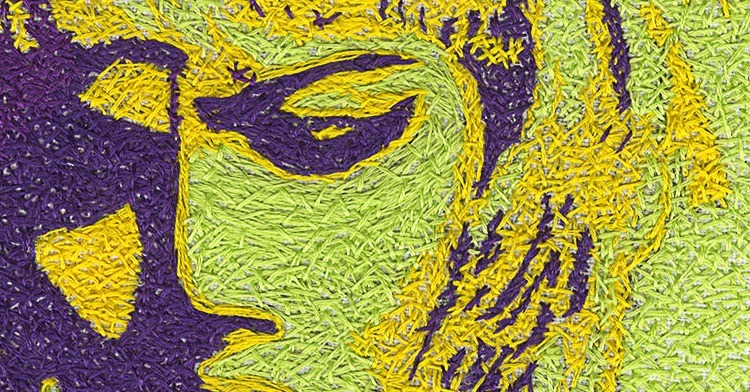
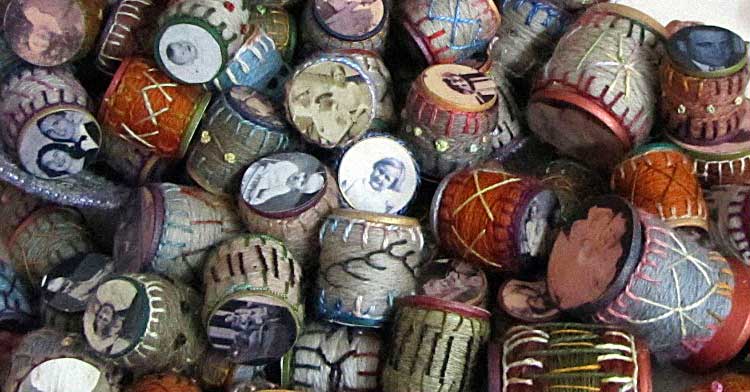
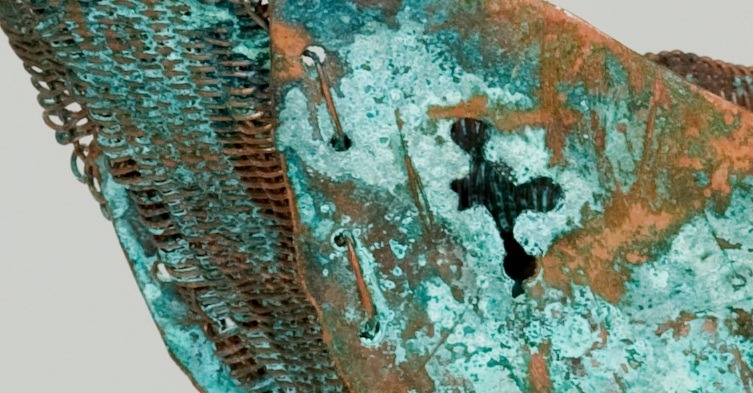
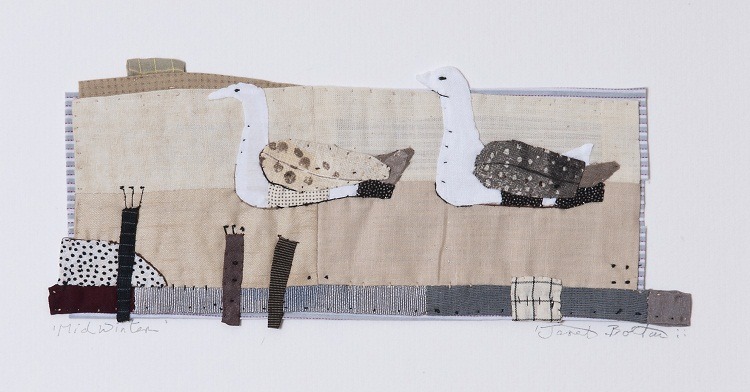
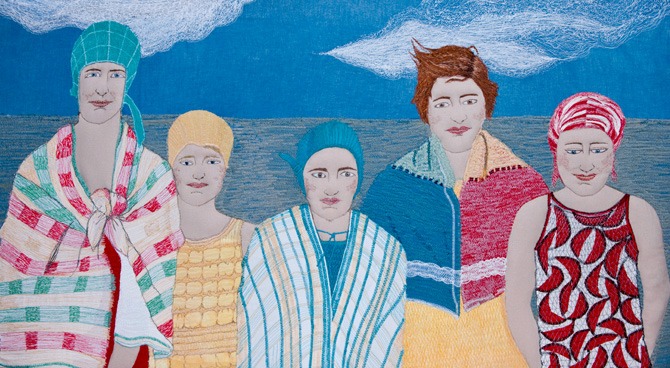
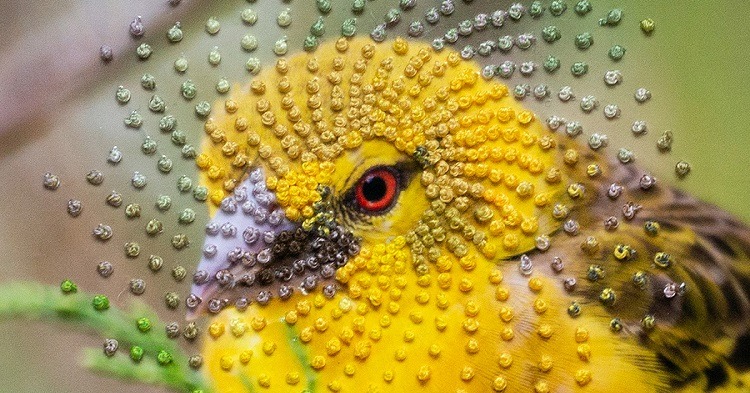
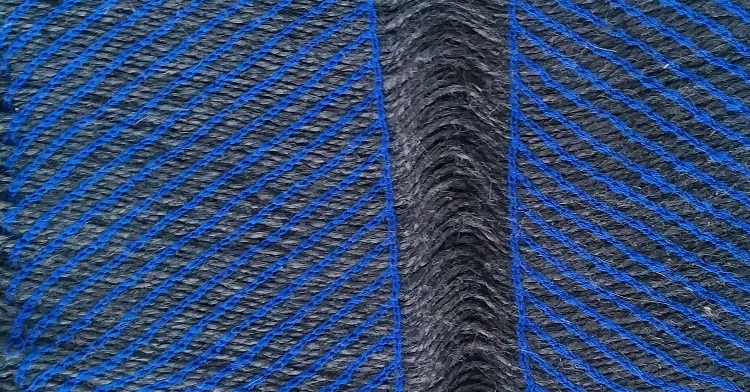
1 comment
Hair Extensions
Thanks for sharing,
Artists in thread are truly remarkable, transforming simple strands into intricate works of art. Their creativity and skill breathe life into fabric, showcasing the endless possibilities of textile art.